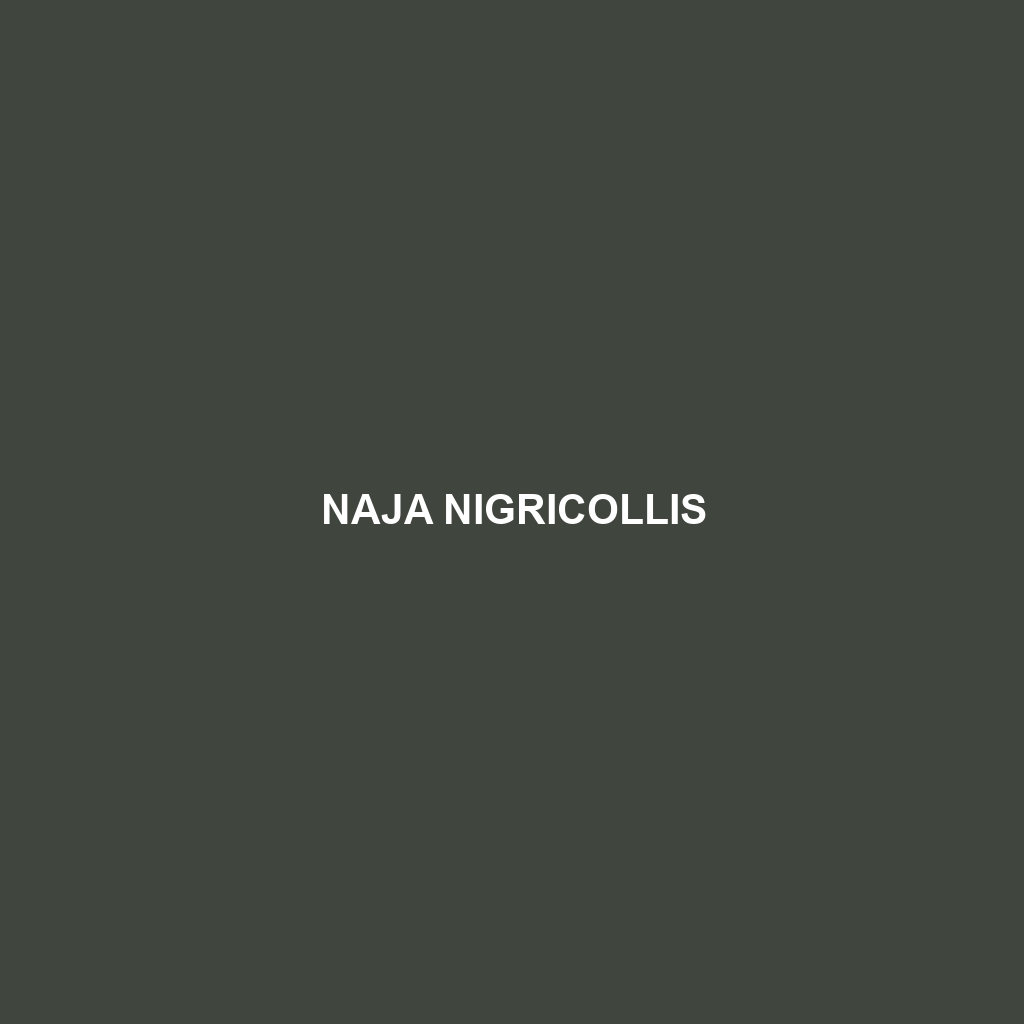Common Name
Naja nigricollis
Scientific Name
Naja nigricollis
Habitat
Naja nigricollis, commonly referred to as the black-necked spitting cobra, is primarily found across a diverse range of habitats in sub-Saharan Africa. It thrives in open areas including savannas, grasslands, and light forests. This species is also occasionally encountered in agricultural fields, where it hunts for prey. The climatic conditions of these regions are typically warm and tropical, making the black-necked spitting cobra well-adapted to environments characterized by high temperatures. In addition, populations of Naja nigricollis can sometimes be found near freshwater sources and are known to inhabit areas with sandy soils that provide easy burrowing opportunities.
Physical Characteristics
The black-necked spitting cobra is easily identifiable by its distinctive coloration and physical features. Adults typically grow to a length of 1.2 to 2.5 meters (4 to 8.2 feet), with some exceptional individuals reaching lengths of up to 3 meters (nearly 10 feet). The species is recognized for its striking black or dark brown neck and a lighter body, which can vary from light brown to gray. An important note is the species’ hood, which expands when threatened, revealing its hallmark pattern and colors as a warning to predators. Additionally, Naja nigricollis has large, forward-facing fangs that are adapted for injecting venom into prey.
Behavior
Behaviorally, Naja nigricollis exhibits a fascinating mix of traits that intrigue herpetologists and wildlife enthusiasts alike. This species is primarily diurnal, meaning it is most active during the day. When threatened, it displays interesting defensive behaviors, such as raising its hood and hissing loudly to intimidate predators. Notably, this species is also capable of spitting venom, a unique adaptation that allows it to accurately aim its venom at potential threats from a distance. In terms of social interactions, these cobras are solitary creatures, coming together only during mating season. Mating rituals in Naja nigricollis involve elaborate displays and combat between males, which can be quite dramatic.
Diet
Naja nigricollis exhibits carnivorous dietary habits, primarily preying on small mammals, birds, and other reptiles. Its feeding pattern revolves around ambush hunting, where the cobra remains motionless and waits for unsuspecting prey to come within striking distance. This species utilizes its excellent vision and keen sense of smell to locate food. It is important to note that the black-necked spitting cobra plays a vital role in controlling local rodent populations, contributing to the ecological balance within its habitat.
Reproduction
The reproductive cycle of Naja nigricollis typically occurs during the warmer months, from late spring to early summer. After a mating ritual characterized by territorial displays and combat, females lay clutches consisting of approximately 15 to 20 eggs in sandy burrows or hidden locations. The incubation period lasts around 60 to 90 days, after which the hatchlings emerge. These young cobras are independent from birth and begin hunting immediately. Parental care is absent, with the female providing no further assistance after laying the eggs.
Conservation Status
Currently, Naja nigricollis is classified as “Least Concern” by the International Union for Conservation of Nature (IUCN), indicating that the species does not face immediate threats to its population levels. However, habitat loss due to agricultural expansion and urban development could pose potential risks in the future. Conservation efforts are focused on habitat preservation and public education to mitigate human-wildlife conflict, particularly as these snakes can be perceived as threats in populated areas.
Interesting Facts
One of the most interesting aspects of Naja nigricollis is its ability to spit venom, which can travel up to 3 meters (10 feet) accurately targeting the eyes of predators and prey alike. The venom contains neurotoxins that can cause temporary blindness and extreme pain. Another unique behavior is its impressive agility, allowing it to quickly flee or strike when threatened, showcasing a blend of speed and strategy in its survival tactics.
Role in Ecosystem
Naja nigricollis plays a crucial role as a predator in its ecosystem. By managing populations of rodents and other small animals, it helps to maintain the ecological balance. Additionally, this species serves as prey for larger predators, including birds of prey and larger snakes, contributing to the food web. Its role as both a predator and prey highlights its importance in sustaining healthy ecosystems in the savannas and forests of sub-Saharan Africa.
